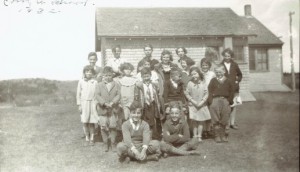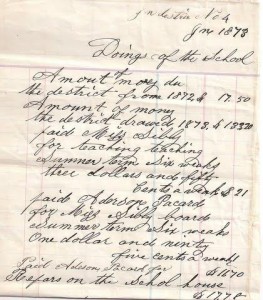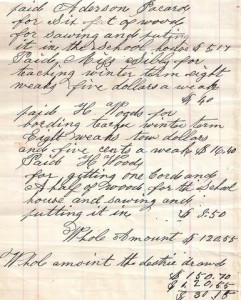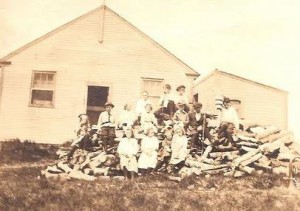When I was perhaps three years old and lively, my mother returned to teaching grades K–8 in a one-room schoolhouse just north of our house in Augusta, Maine, known as the White Schoolhouse. Lacking daycare at the time, she took me with her most days, and I learned the Palmer method of cursive handwriting long before I learned to sit still. I didn’t realize until much later that the school had been a point of contention between my great-great-great-great-grandfather Read and the City’s school board.
George Read (1759–1848), a veteran of the Revolutionary War, was not only a staunch patriot who refused to whitewash his chimneys in the British manner, he was a no-nonsense, common-sense advocate of education. But in 1830, when the Augusta School Board decided to build a small schoolhouse a half mile north of George’s home, he strenuously objected. The site, he said, was on a knoll, too exposed to the weather and open to the wind, too uncomfortable for children, and far too expensive to heat. The city didn’t listen, and neither did George.
He built his own school and ran it at his own expense. In 1830, George established a trust which provided a plot of land in his field just north of his house, and about half a mile south of the city’s school, “for the purpose of a school for the use and benefit of the children belonging to families who for the time being reside within the limits herein after described” (essentially those on what is now West River Road).
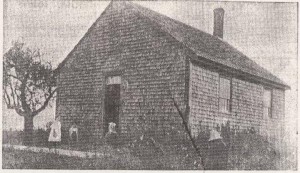 George’s school was called the Red Schoolhouse for its red painted shingles, but it was also known as the Read Free School. George’s descendants, including my father and his siblings, as well as the children in the adjacent neighborhood, attended the Red Schoolhouse.
George’s school was called the Red Schoolhouse for its red painted shingles, but it was also known as the Read Free School. George’s descendants, including my father and his siblings, as well as the children in the adjacent neighborhood, attended the Red Schoolhouse.
The original trustees oversaw the school’s budget, a job which eventually fell to my great-great-grandfather Charles Otis Cony (1836–1924). Entitled “Doings of the School, June 1873,” his accounts detail the $40 paid to Miss Sibly for teaching an eight-week winter term (she received only $3.50 per week for the six-week summer term), along with the cost of the wood used to heat the building (one and a half cords, sawed and delivered: $8.50).
Time was not kind to the Red Schoolhouse. Sometime after the 1930s it fell into disrepair from lack of use. By about 1950 it was gone, the area once again a hay field, and currently populated by cabbages and corn.
The city, however, kept the school on the hill, known as the White Schoolhouse for its painted clapboards, open to all local students who were taught by Mrs. Jessie White. (Mrs. White boarded at our house during the week when school was in session. My mother, Eleanor McLeod Church [1911-2005], succeeded her as teacher.) We used that hill for sledding during recesses while my mother stood watch for the very occasional passing car. A “cloak room” was just inside the door, and a wood stove helped to heat the classroom. Wood and iron desks were bolted to the floor, the chalkboards were black not green, and neighborhood pets came to visit their student owners without Teacher’s permission. The school was closed about 1954, one of the last one-room schoolhouses in Augusta.
While the Red Schoolhouse disappeared completely, the White Schoolhouse is now a machine shop, a neighborhood multi-generational gathering place for business, coffee, news, and friendly dogs snuggling up to a wood stove. Maybe it hasn’t changed that much after all.
Share this:

About Jan Doerr
Jan Doerr received a B.A. degree in Sociology/Secondary Education from the University of New Hampshire, and spent a long career in the legal profession while researching her family history. She has recently written and published articles for WBUR.org’s Cognoscenti blog: “Labor of Love: Preserving a 226-Year-Old Family Home and Preparing to Let It Go” and “The Value of Family Heirlooms in a Digital Age.” Jan currently lives with her attorney husband in Augusta, Maine, where she serves two Siamese cats and spends all her retirement money propping up a really old house.View all posts by Jan Doerr →
